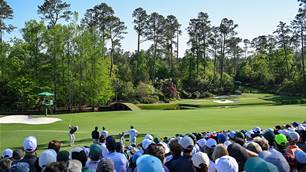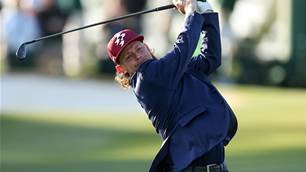The wheels of change turn slowly in golf, especially in a digital age where we demand – and receive – so much instant gratification.
Which is why the R&A and Augusta National are to be applauded for the foresight they have shown with the Asia-Pacific Amateur Championship and this week’s women’s equivalent (Women’s Amateur Asia-Pacific).
While it would be easy to see the events as a ‘box ticking exercise’ – and indeed just as easy to run them as such – they are far from it.
Yes, they play an important role in promoting both The Masters (and by default Augusta National Golf Club) and The Open but in reality, they both achieve so much more.
Most of today’s news stories will be about Australia’s Harrison Crowe and his impressive comeback from a poor front nine in Thailand to secure a one shot victory over China’s Bo Jin.
"The Asia-Pacific Amateur is unquestionably an elite tournament but it is about much more than just elite players." - Rod Morri.
There will be much written about his impending move to the pro ranks being delayed so he can tee up at both the Masters and Open Championships in 2023.
And all of those accolades and all those spoils of victory are richly deserved.
But it is not at the top end of the leaderboard where this tournament has the biggest impact.
Players like Crowe and Jin were already on a trajectory that may have seen them playing majors regardless. But that’s not true at the other end of the field.
The most impressive thing about the Asia-Pacific Amateur Championship isn’t that is attracts world class amateurs from existing golf strongholds, it’s that it offers opportunities to players from parts of the world where the game is merely an afterthought, if it is even thought of at all.
Players from countries as diverse as Jordan, Lebanon, Iraq, Iran, Papua New Guinea, Mongolia, Bhutan, Nepal, Myanmar and Kyrgyzstan took their place this week alongside elite amateurs from powerhouses like Australia, Korea, New Zealand and Japan.
And while it is unlikely there will be a contender from any of those smaller nations soon, what the Asia-Pacific Amateur taps into is aspiration and perhaps the most important of all human emotions, hope.
For evidence see Jantai Malataev of Kyrgyzstan and Nepal’s Subash Tamang, both of whom were the first players from their respective nations to make the cut at the event.
When this tournament started 13 years ago that would have been an almost unthinkable outcome. In 13 years’ time, it is to be hoped it won’t even rate a mention.
What Augusta National and the R&A set in motion in 2009 is beginning to bear fruit, testament to their taking the long view.
And just as organisers celebrated when Hideki Matsuyama became the first player to capture both the AAC title and the Masters green jacket, they will have a sense of satisfaction today that the achievements of Malataev and Tamang represent another step along the pathway.
The Asia-Pacific Amateur is unquestionably an elite tournament but it is about much more than just elite players.
In fact, it is one of the few examples of an initiative that might actually pay more than lip service to the notion of ‘growing the game’.
Related Articles
Heartbreak for Aussies at history-making Asia-Pacific Amateur

Rory the winner, but Augusta the undefeated champion of the 89th Masters













